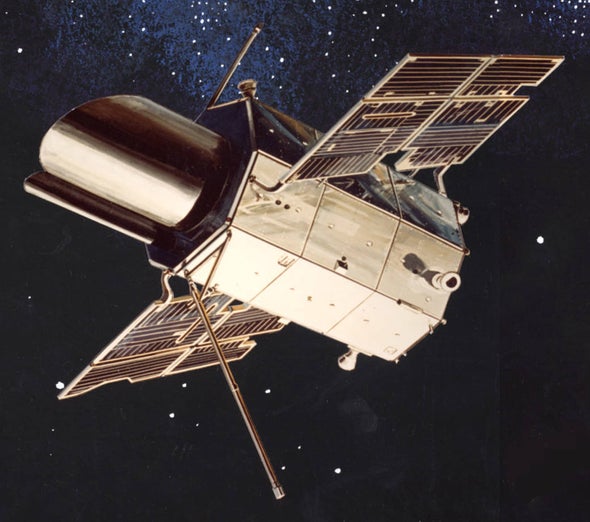“It’s these types of environments — these weird ones — that are driving us toward better understanding the mystery of FRBs.”
On the Radio
The humble Hubble Space Telescope has been instrumental in observing something remarkable: the possible and highly unusual birthplace of the most distant fast radio burst (FRB), extremely powerful and unresolved flashes of radio frequency, ever observed.
The FRB was first discovered 18 months ago by the Australian Square Kilometre Array Pathfinder radio telescope.
Scientists were excited, if not stumped, by the super-strong energy burst — more than four times more energetic than other FRBs that have been detected — and subsequent observations revealed that it came from an extremely distant location, dating back to when the universe was just five billion years old.
When it was first detected, this radio burst seemed to originate near, as a press release describes it, “an unidentifiable, amorphous blob.” Early on, researchers speculated that the blob could be a group of up to three galaxies.
When Hubble took on the case, however, the FRB’s probable origin became clearer: a group of at least seven galaxies that existed when the Universe itself was only five billion years old — a highly unusual conclusion that could force us to reconsider what we know about the unusual phenomenon.
Explosive Interactions
The finding caught scientists studying the Hubble observations by surprise.
“It required Hubble’s keen sharpness and sensitivity to pinpoint exactly where the FRB came from,” said Northwestern graduate student Alexa Gordon, lead author of a recent study about the research, in the statement. “Without Hubble’s imaging, it would still remain a mystery as to whether this was originating from one monolithic galaxy or from some type of interacting system.”
Gordon and her colleagues also noted that there is a likelihood that the galaxies in question may be in the process of merging, which could contribute to the FRB’s strength.
“This interaction could trigger bursts of star formation,” Gordon said in the statement. “That might indicate that the progenitor of FRB 20220610A is associated with a fairly recent population of stars, which matches what we’ve learned from other FRBs.”
“Despite hundreds of FRB events discovered to date, only a fraction of those have been pinpointed to their host galaxies,” added study co-author and NSF graduate research fellow Yuxin Dong. “Within that small fraction, only a few came from a dense galactic environment, but none have ever been seen in such a compact group. So, its birthplace is truly rare.”
As one might imagine, FRBs are a persistent space enigma — and scientists who’ve worked on this discovery are hopeful that it will contribute to their understanding of how these strange transmissions work.
“It’s these types of environments — these weird ones — that are driving us toward better understanding the mystery of FRBs,” Gordon said.


